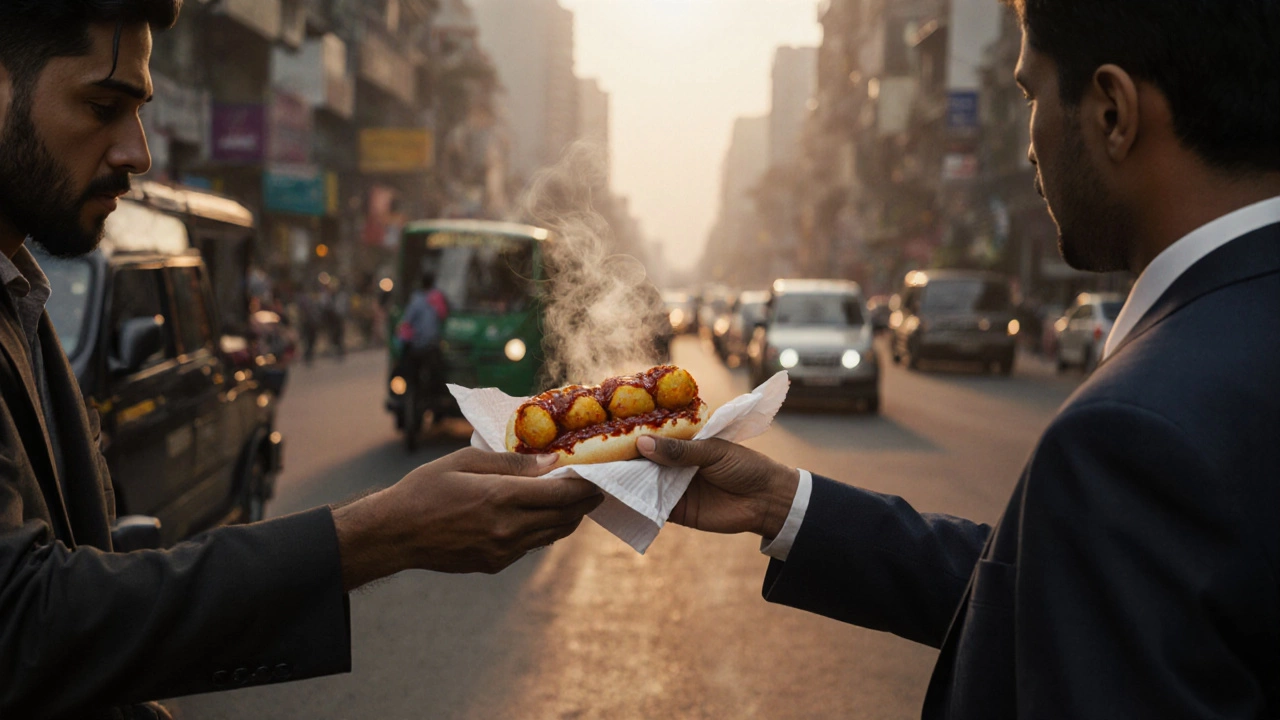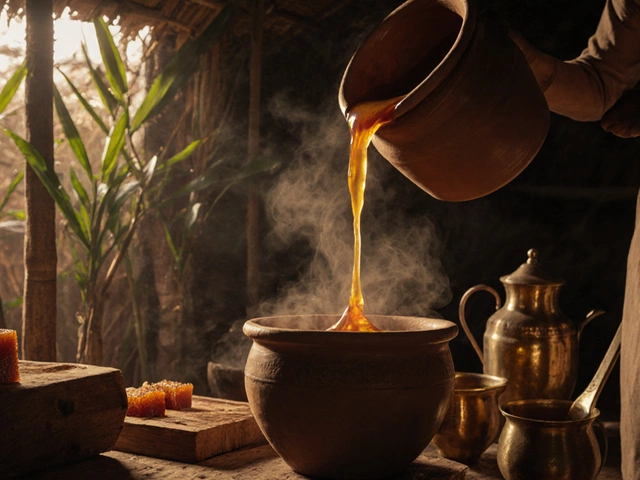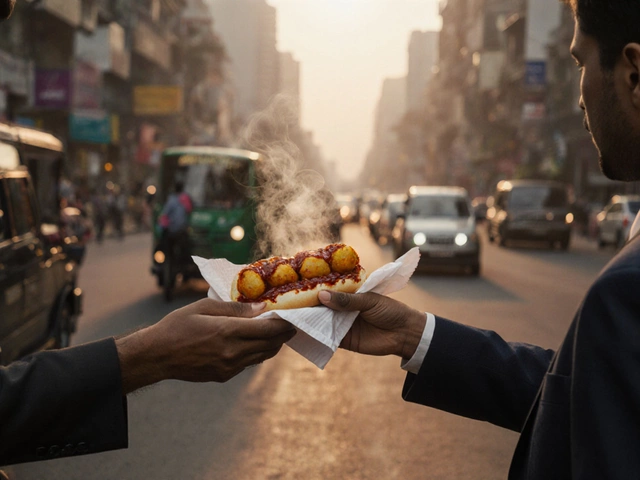Indian Breakfast Finder
Select Your Region
Regional Breakfast Options
Select a region to see breakfast options.
Ask someone in Mumbai what they eat for breakfast, and they might say vada pav. Ask someone in Chennai, and they’ll say idli with sambar. In Delhi, it’s paratha with yogurt. In Kolkata, it’s puchka and tea. There’s no single typical breakfast in India-because India isn’t one place. It’s 29 states, over 22 official languages, and a thousand ways to start the day.
South India: Rice, Lentils, and Steam
In Tamil Nadu, Karnataka, Andhra Pradesh, and Kerala, breakfast isn’t just a meal-it’s a ritual. The stars are idli and dosa. Idlis are soft, steamed rice-and-lentil cakes, light as air and packed with protein. They’re served with coconut chutney and a tangy tamarind sambar made from lentils, tomatoes, and spices like mustard seeds and curry leaves.
Dosas are the crispy cousins. Made from fermented batter, they’re thin, golden, and foldable. Masala dosa, stuffed with spiced potatoes, is the classic. People eat them with their hands, tearing off pieces to dip. In rural areas, you’ll still find women grinding rice and urad dal on stone grinders before sunrise. The fermentation takes 8-12 hours. No yeast. No shortcuts. That’s why it tastes different.
Uttapam is another favorite-thicker than dosa, topped with onions, tomatoes, and chilies. And then there’s pongal, a savory rice-and-lentil porridge cooked with black pepper and cumin. It’s often eaten with coconut chutney and a side of pickled mango.
North India: Bread, Butter, and Heat
Up north, breakfast is all about bread. Parathas-flaky, layered flatbreads-are king. They’re stuffed with potatoes (aloo paratha), paneer, cauliflower, or even minced meat. Cooked on a griddle with ghee or oil, they’re crispy on the outside, soft inside. Served with yogurt, pickle, or a dollop of butter.
In Punjab, you’ll find makki di roti with sarson ka saag-but that’s more winter fare. For everyday mornings, it’s poori with aloo sabzi. Deep-fried, puffy bread with spiced potatoes. Or simply bread with tea. Yes, tea. Not coffee. Not juice. Tea, strong and sweet, brewed with milk and ginger.
In Delhi and Haryana, people eat kachori-deep-fried pastry stuffed with spiced lentils or peas. It’s greasy, spicy, and addictive. Often paired with sweet tamarind chutney. And in Rajasthan, bajra roti with ghee and lentil curry is common, especially in villages where wheat is too expensive.
East India: Sweet, Simple, and Steamy
In West Bengal, breakfast leans sweet. Puchka (or golgappa) isn’t just street food-it’s a morning snack for many. Crispy hollow balls filled with tamarind water, chickpeas, and spices. Eaten with a burst of flavor. But the real morning staple? Misti doi and rice.
Misti doi is sweetened yogurt, set in earthen pots, giving it a caramelized edge. Served with plain rice or sometimes with a spoonful of jaggery. In Odisha, it’s chhena poda-a baked cheese cake made with cottage cheese, sugar, and cardamom. Not for every day, but for Sundays.
In Assam, rice is still the base. People eat it with lentil curry, fish pickle, or boiled eggs. Tea is non-negotiable. Assam tea, strong and malty, drunk without milk. Breakfast here is quiet, simple, and rooted in tradition.
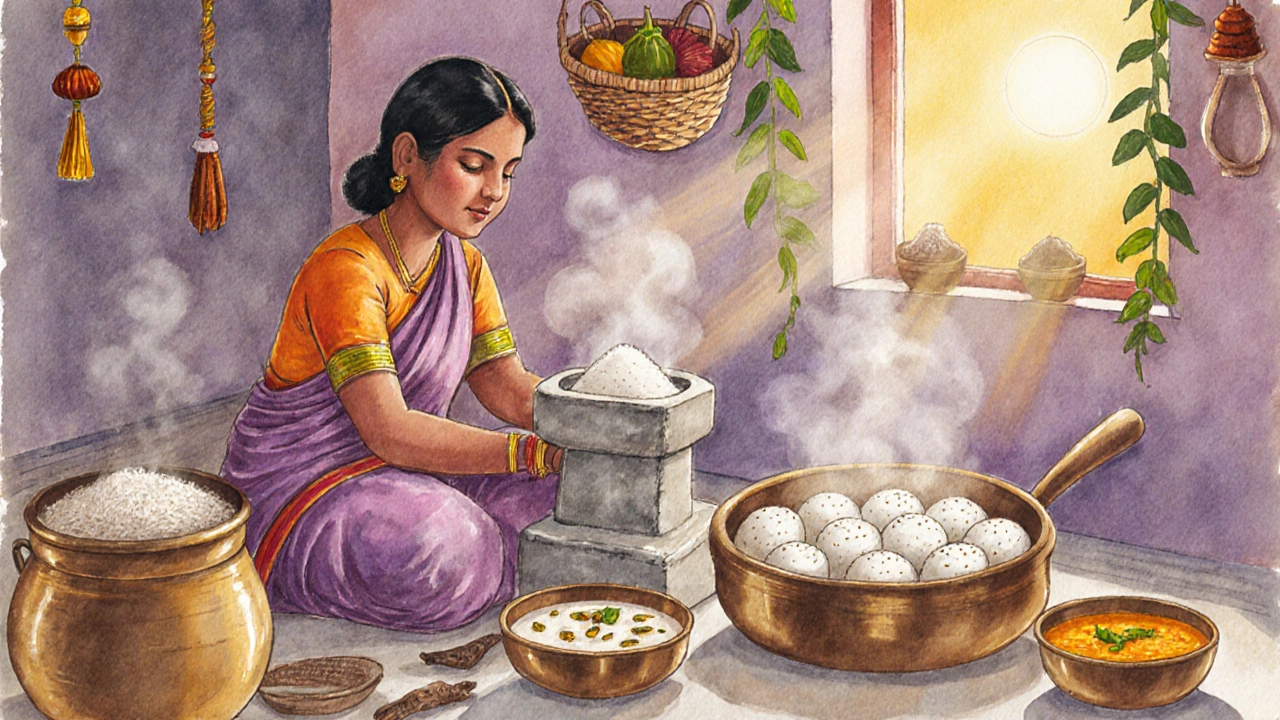
West India: Fast, Fresh, and Flavorful
In Maharashtra, breakfast is fast. Vada pav is the urban favorite-a fried potato fritter stuffed in a bun, dipped in spicy chutney. It’s the Indian burger. Sold by street vendors before 7 a.m. You’ll see office workers eating it on the go, paper napkins in hand.
In Gujarat, it’s the opposite-sweet. The morning often starts with dhokla, a steamed fermented chickpea cake. Light, spongy, and slightly sour. Served with green chutney. People also eat handvo, a baked savory cake made with lentils and vegetables.
In Goa, breakfast is a blend. Pao bhaji-soft bread with spiced vegetable mash-is common. But so is rice with fish curry. The Portuguese legacy shows up in bread and cakes. Many Goans eat bebinca, a layered coconut pudding, for Sunday breakfast.
Why These Meals Work for Quick Mornings
None of these breakfasts are fancy. But they’re designed for efficiency. Fermented batters (idli, dosa, dhokla) can be made the night before. Parathas can be pre-cooked and reheated. Vada pav? Just fry and assemble. Even tea is quick-boil water, add leaves, milk, sugar.
These meals are also balanced. Carbs from rice or bread. Protein from lentils or yogurt. Fat from ghee or oil. Spices for digestion. No sugar-heavy cereals. No processed toast. Just real food, made fresh daily.
In cities, you’ll find packaged idli mixes or frozen parathas. But the taste isn’t the same. The best breakfasts still come from home kitchens or small stalls that open before dawn.
What to Try If You’re New to Indian Breakfast
If you’ve never had an Indian breakfast, start here:
- Idli with sambar - The gentlest introduction. Mild, healthy, and satisfying.
- Vada pav - If you like burgers, you’ll love this. Spicy, crunchy, and filling.
- Dhokla - Light, tangy, and gluten-free. Great if you want something different.
- Aloo paratha - If you’re craving something hearty and warm.
- Tea with biscuits - Simple, but the most common way to start the day across India.
Don’t expect pancakes or bacon. Don’t expect cereal. Indian breakfasts are built on grains, legumes, and spices-not dairy and sugar. They’re not just food. They’re culture, geography, and history on a plate.
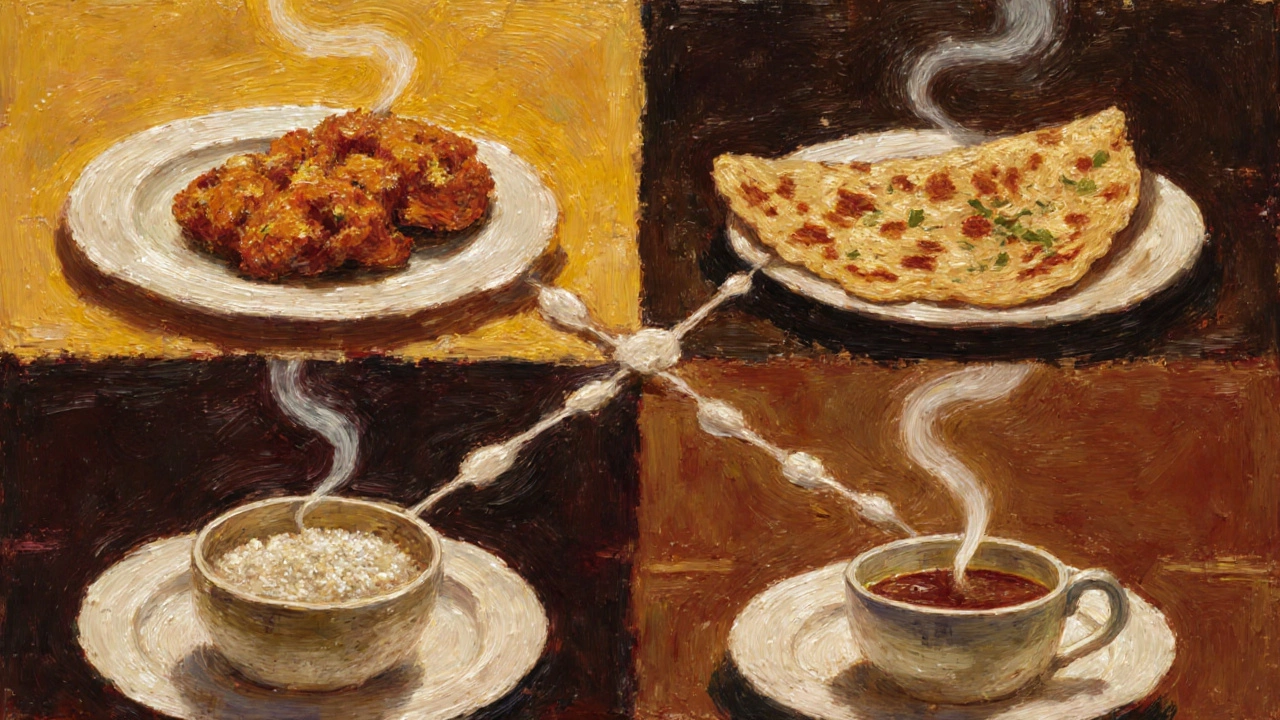
Regional Breakfast Comparison
| Region | Core Dish | Accompaniments | Prep Time |
|---|---|---|---|
| South India | Idli, Dosa | Sambar, coconut chutney | 12+ hours (fermentation) |
| North India | Aloo Paratha | Yogurt, pickle, tea | 30-45 minutes |
| West India | Vada Pav, Dhokla | Green chutney, tamarind sauce | 20-30 minutes |
| East India | Misti Doi + Rice | Jaggery, fish pickle | 1 hour (yogurt set) |
| Rural Areas | Bajra Roti | Lentil curry, ghee | 45 minutes |
Quick Breakfast Hacks for Busy Days
Can’t spend hours grinding batter? Here’s how to make Indian breakfasts faster:
- Buy pre-made idli or dosa batter from Indian grocery stores. Just steam or fry.
- Keep frozen parathas on hand. Reheat in a pan or microwave.
- Use store-bought chutneys. Coconut, mint, and tamarind are widely available.
- Make a big batch of sambar on Sunday. Freeze in portions. Reheat all week.
- Keep boiled eggs and yogurt ready. Add them to any bread or rice for protein.
Even with shortcuts, the flavors stay true. You don’t need to be Indian to enjoy this food. You just need to be hungry.
Is Indian breakfast healthy?
Yes, most traditional Indian breakfasts are naturally healthy. They rely on whole grains like rice and millet, fermented lentils for protein, and minimal added sugar. Dishes like idli, dhokla, and upma are low in fat and high in fiber. The use of spices like turmeric, cumin, and ginger aids digestion. But fried items like vada pav or poori can be high in oil if eaten daily. Balance is key.
Can I make Indian breakfast without a tawa or steamer?
Absolutely. You can cook dosas and parathas on a regular nonstick pan. For idlis, use a microwave-safe bowl and microwave for 5-6 minutes-many people do this now. You can also bake dhokla in a regular oven. You don’t need special tools, just time and patience. The flavors matter more than the equipment.
What’s the most popular breakfast in Indian cities?
In Mumbai, it’s vada pav. In Delhi, it’s paratha with chai. In Bangalore, idli-dosa dominates. In Kolkata, puchka and tea are common. Fast, portable, and cheap-these are the winners. Even in high-rise apartments, people grab street food before work. The urban breakfast is less about tradition and more about speed.
Do Indians eat breakfast every day?
Almost everyone does. Skipping breakfast is rare in India. Even in low-income households, people make something-tea with bread, leftover rice with dal, or a simple roti. Breakfast is seen as essential for energy. In rural areas, farmers eat before sunrise. In cities, office workers eat before the commute. It’s part of the rhythm of the day.
Is Indian breakfast vegetarian?
Most traditional breakfasts are vegetarian, especially in the south and west. Lentils, rice, and dairy are the base. But in coastal areas like Kerala and Goa, fish curry is common with rice. In some parts of Bengal and Punjab, eggs are eaten. Meat is rare at breakfast, but not unheard of. Overall, Indian breakfasts lean vegetarian by default.
What Comes Next After Breakfast?
After breakfast, Indians don’t snack on cookies or granola bars. They have tea-multiple times a day. Mid-morning tea with biscuits. Evening chai with samosas. Dinner is the big meal. Breakfast is the quiet start. It’s not about calories or protein counts. It’s about rhythm. About waking up, smelling spices, and knowing what’s waiting on the plate. That’s the real Indian breakfast.
